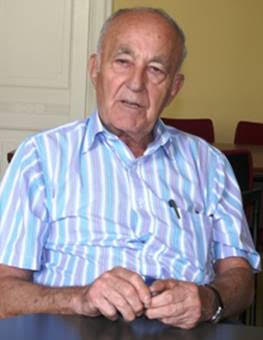
THE VOICE OF INTERNATIONAL LITHUANIA
|
VilNews has its own Google archive! Type a word in the above search box to find any article.
You can also follow us on Facebook. We have two different pages. Click to open and join.
|
Author Archive
- Posted by - (0) Comment
|
|
KAUNAS IN FOCUS |
|
|
Kaunas, Lithuania's second largest city and former capital, is receiving much attention in VilNews this winter. We focus on history, business, culture, innovation, tourism and more. We would also like to hear from you who have your personal Kaunas story to tell... Send us your Kaunas story!
|
||
|
Visit Kaunas this winter!
Why not visit Kaunas this advent? Let’s give you some good reasons. See below.
|
||
|
Kaunas – the taste of real Lithuania!
By Arnas Menciūnas, Welcome to Kaunas, the city which has mostly preserved the national character of the country, offering plenty of activities to everyone. Visit the heart of Lithuania and experience it‘s unique atmosphere: Feast here! Kaunas is home to a variety of festivals and events, including the famous Kaunas Jazz festival, Hanza days, Operetta, Pažaislis Classical Music festival, Bike show, Kaunas city days, Songs festival (listed by UNESCO), International Modern Dance Festival and much more. Visit! The remarkable Old Town which is a collection of ancient architectural monuments: the remnants of the 14th century with remains of Kaunas castle, the buildings of the Middle Ages in the Gothic and the Art Déco styles. The Kaunas Fortress is a valuable military heritage composed of a number of constructions that used to be a military complex. There are nine Forts around the city and the IXth Fort serves a museum. The macabre collection of nearly 3,000 devils at the Devils' Museum and the exhibitions showing the unique artistic styles of composer and painter M. K. Ciurlionis, as well as J. Maciunas initiator of the avant-garde Fluxus art movement. Taste it! The centre-piece of Lithuanian cuisine is dark rye bread. It is shown a great respect and even called "holy" and Lithuanians link many beliefs and magic with it. The great opportunity to taste it is to have soup in a bread bowl. Lithuanian drinks have very old traditions, to get to know them the "Stumbras" museum offers a guided tour of the history and tasting of strong drinks. Among the multitude of things that make any Lithuanian swell with pride (rich history, amber, beautiful nature, basketball, etc.), there is one that has a special place in his heart. This source of pride is the Lithuanian Beer. Make a wish! The beautiful confluence of two biggest Lithuanian rivers is well known for a magical saying - the Nemunas river is a male and the Neris is a female . The meeting of two rivers is considered as a marriage of a couple. Two rivers meet in Kaunas, they join and never split up! For those who want their dreams to come true it‘s a right place to go on rendezvous. See it! The whole Lithuania in one place is in the open air museum in Rumšiškės, which is the biggest open air museum in Eastern Europe. The museum with its collection of authentic wooden villages represents different regions of Lithuania: Zemaitija, Aukstaitija, Dzukija, Suvalkija and Lithuania Minor. Ride on it! The Funicular - a unique mean of transportation, is still in use today, including the genuine pre-war wagon, wooden seats, and stop platforms. Even today the funicular takes people up to the hill, from which the panorama of the Kaunas city centre and Old town is wide open. Kaunas is the only city among Baltic States, where such means of transportation is available. Sail! The biggest man-made water basin in Lithuania, which is surrounded by a wonderful landscape. Kaunas Sea is a perfect place for water activities. So see you on the deck! If you want to feel the real Lithuanian spirit, visit Kaunas and discover it. The heart of Lithuanian culture, tradition and history is just waiting to be discovered. Hotel news in 2012 IBIS KAUNAS CENTRE (opened in April, 2012) The Ibis Kaunas Centre hotel is located in the centre of Kaunas, within walking distance to the historic Old Town, close to railway and bus station and easy access to the highway to International Kaunas Airport. Ideal for business and leisure stays where guests can explore the city of Kaunas. It has 125 air-conditioned rooms with free Internet access, conference facilities, a bar serving snacks 24/7 and onsite parking. Our restaurant, The Oopen will delight you with pasta & grill dishes. Accor is the world’s number-one and Europe’s leading hotel operator. It has 440,000 rooms in nearly 3,500 hotels in 92 countries. Its extensive brand portfolio – encompassing Sofitel, Pullman, MGallery, Grand Mercure, Novotel, Suite Novotel, Mercur, Adagio, ibis, ibis Styles, Adagio Access, ibis budget and hotelF1 – provides a comprehensive range of options across the luxury to economy spectrum. Hotel and Eco center BABILONAS 2012 years 22 th. of June renovated hotel "Babilonas" was opened and now it's not only hotel, but and eco-tourism center. The rooms radiate a feeling of coziness created by modern wooden windows, curtains made from Lithuanian linen and the breathtaking panoramas of the city and the surrounding landscape. We can offer 50 high-quality German and American bikes, which can travel in urban areas and long distances. In formed package are included active entertainment, meals, transportation. Kaunas tourism information center and conference bureau offers original ways to get to know Kaunas. Unique guided tours allow you to glimpse the real charm of the city and see things that you never expected! Every visitor can choose These excurions: „Kaunas Compliments Women“, „The Old Town secrets in Kaunas”, „Strong alcohol degustation in Factory “Stumbras”, „Beer Route in Kaunas (excursion and degustation)”, „Basketball history in Kaunas“, „Sweet Kaunas",, „Spirit of Kaunas Catacombs”, „Kaunas – Provisional Capital“.
|
- Bookmark :
- Digg
- del.icio.us
- Stumbleupon
- Redit it
- Posted by - (0) Comment
|
|
Kaunas Castle |
|
|
Town Hall
|
|
|
Arch-Cathedral Basilica
|
|
|
Vilnius Street
|
|
|
Historical Presidential Palace
|
|
|
Musical Theatre
|
|
|
St. Michael the Archangel Church (Sobor)
|
|
|
Pažaislis Monastery
|
|
|
Kaunas Funiculars |
|
|
Kaunas Monumental Christ’s Resurrection Church |
|
|
House of Perkūnas |
- Bookmark :
- Digg
- del.icio.us
- Stumbleupon
- Redit it
- Posted by - (1) Comment
| PLACES TO SEE IN KAUNAS | |
| Kaunas Castle |
|
| Town Hall
|
|
| Arch-Cathedral Basilica
|
|
| Vilnius Street
|
|
| Historical Presidential Palace
|
|
| Musical Theatre
|
|
| St. Michael the Archangel Church (Sobor)
|
|
| Pažaislis Monastery
|
|
| Kaunas Funiculars |
|
| Kaunas Monumental Christ’s Resurrection Church |
|
| House of Perkūnas The ruined house was rebuilt in the 19th century and served as a school and theatre, which was attended by Polish-Lithuanian poet Adam Mickiewicz. At the end of the 19th Century it was renamed "House of Perkūnas", when a figure, interpreted by the romantic historians of that time as an idol of the Baltic pagan god of thunder and the sky Perkūnas was found in one of its walls. Today, the house of Perkūnas once again belongs to the Jesuits and houses a museum of Adam Mickiewicz. |
- Bookmark :
- Digg
- del.icio.us
- Stumbleupon
- Redit it
- Posted by - (1) Comment
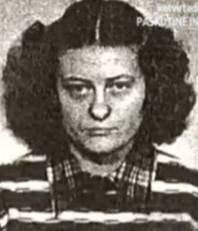
Above: ID photo of 22-year old Dalia Grybauskaitė
Has the President introduced censorship of Lithuanian press?
The programme was not shown on TV 3, but soon appeared on lrytas TV (see below). Not many days later Ruta Janutienė was fired from her television job, and many started asking if President Grybauskaite may be behind. We asked our readers, and have received many comments in our
follow the debate)
From lrytas TV:
http://tv.lrytas.lt/?id=13536769321352934173
VilNews Forum comments:
__________________________
Welcome to the new Smetona times!

Vyto Be For those that favor the 'history repeats itself' theory, I'd say we are approximately at 'Lithuania 1938' right now...
It is called 'Freedom of the Press'. Lithuania doesn't have it. But no one seems to mind. Welcome to the new Smetona times!
I agree that Janutienė can vary as a journalist. But if someone of her stature was fired like this in America, guaranteed, her show would run on a competitor's channel, and would receive 10X the attention now. Let's see if that happens in Lithuania...
__________________________
This appears to be a non-story

Rimas Pileika All the main Lithuanian media analysts came to the conclusion that TV3 banned Janutienė’s documentary due to pressure from Grybauskaitė or due to its fear of such pressure. During the rule of previous Lithuanian presidents, such censorship was unimaginable.
This appears to be a non-story. No one has proof of anything. Maybe the TV station was correct in its assessment? What does the version on the internet accuse her of?
__________________________
I don't understand why TV3 didn't air it

Linas Johansonas Rimas Pileika: the "accusations" are written about in the above posted article. Nothing significant, thus why I don't understand why TV3 didn't air it.
__________________________
People like Janutiene shouldn't have freedom to do what they want

Ingrid Baronaite Hammoud ...it's all to do with ethics..try to remember "Pedophile scandal" she's been very supporting Venckiene and permitting herself to behave as a judge, brainwashing people on TV with the "right" facts, actually, I would like her to see in the court forthat!...She was supposed to be objective and more intelligent instead of behaving as a woman with the menopause syndrome...once upon a time I adored her courage, but now I see she needs rehabilitation.. seriously..these people like Janutiene shouldn't have freedom to do what they want, because they are crazy enough to make a mess in a big way, without realizing the consequences..and disaster they cause..
..very soon Janutiene is gonna face court case, because of her unethical behave during "Pedophile scandal", her reputation is down the drain...she lost popularity - even her participation in dancing competition didn't help to attract people's attention ..
__________________________
Janutienė may not always behave appropriately, but she is the one who dares to speak the truth, who finally started investigative journalism in Lithuania

Viktorija Ruškulienė Vyto, Lithuanian people are more than ready for democracy, it's the government and ex-communist leadership, that is not ready to give up their power.
..unethical is the entire state ruling and controlling, Janutienė may not always behave appropriately, but she is the one who dares to speak the truth, who finally started investigative journalism in Lithuania.
- Bookmark :
- Digg
- del.icio.us
- Stumbleupon
- Redit it
- Posted by - (0) Comment
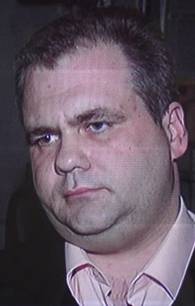
Lithuanian court clears late Andrius Ūsas in notorious paedophilia case
A Vilnius court acquitted late Andrius Ūsas who was charged with molesting a minor.
The court ruled on Friday that the small girl was not abused and that the only way she might have had any sexual experience was during a filmed testimony after being coached by her father, late Drąsius Kedys.
An appeal against the ruling may be filed within 20 days.
Both the prosecutor and the defense lawyer asked the court to clear the defendant of the charges, while representatives of the children's rights watchdog suggested that the ruling note a lack of conclusive evidence to uphold the charges. The lawyer representing the girl asked to find Ūsas guilty.
Read more…
- Bookmark :
- Digg
- del.icio.us
- Stumbleupon
- Redit it
- Posted by - (0) Comment
|
|
24 NOV – 26 DEC 2012 |
|
|
Kaunas, Lithuania's second largest city and former capital, is receiving much attention in VilNews now as 2012 is coming to an end. We focus on history, business, culture, innovation, tourism and more. We would also like to hear from you who have your personal Kaunas story to tell... Send us your Kaunas story!
|
||
|
Thinking of business?
|
||
- Bookmark :
- Digg
- del.icio.us
- Stumbleupon
- Redit it
- Posted by - (0) Comment
Kitron to invest in Kaunas
instead of China, Norway
One of the leading electronics manufacturing services suppliers in Scandinavia – Kitron – will expand its manufacturing facility in Lithuanian city Kaunas, and invest almost six million euros into this project, the Invest in Lithuania reports now in November.
The expansion strategy of the Norwegian company in Lithuania encompasses an increase in its production capacity, the creation of 60 new job openings and an improvement to the company's revenue by 40%, writes LETA/ELTA.
In Kaunas, Kitron already produces electronic control systems for high-speed rail vehicles and electric grass mowers, electronic circuits for ultrasound devices, scientific equipment for seabed research, mobile blood test devices, smart grid/automatic meter reading systems and other electronic equipment.
"To win this expansion project, Lithuania competed with the US, Norway and China, all of which are well-known to Norwegian investors as countries where they have already established manufacturing facilities. Our country [Lithuania] was chosen because of its convenient location for logistics, the low costs of labor, and the resources to ensure production quality. Since the Norwegian company also supplies its goods to the defense and medical equipment industries, qualitative criteria were important to the decision on location," said the Managing Director of Kitron Lithuania, Mindaugas Sestokas.
- Bookmark :
- Digg
- del.icio.us
- Stumbleupon
- Redit it
- Posted by - (1) Comment
|
|
KAUNAS IN FOCUS 24 NOV – 26 DEC 2012 |
|
|
Kaunas, Lithuania's second largest city and former capital, is receiving much attention in VilNews now as 2012 is coming to an end. We focus on history, business, culture, innovation, tourism and more. We would also like to hear from you who have your personal Kaunas story to tell... Send us your Kaunas story!
|
||
|
Thinking of business?
|
||
|
Kitron to invest in Kaunas
|
||
- Bookmark :
- Digg
- del.icio.us
- Stumbleupon
- Redit it
- Posted by - (0) Comment
Kaunas FEZ – the ideal
place for new business
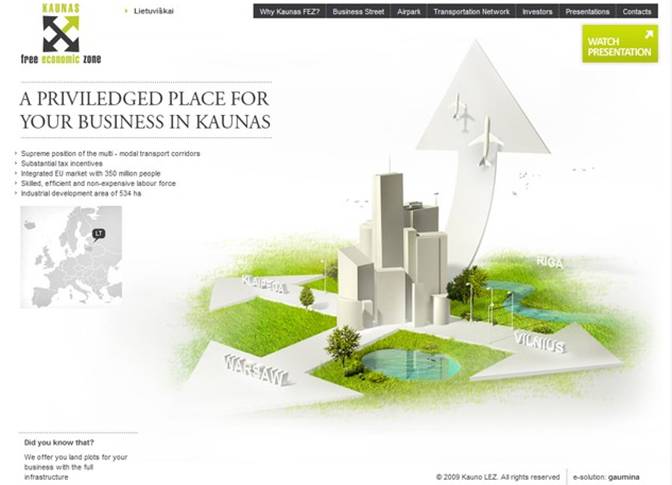
Kaunas FEZ (Free Economic Zone) is a 534 ha industrial
development area which offers tax incentives.
Key advantages include:
· Considerable tax incentives;
· Excellent geographic location, coupled with high quality road and railroad connections;
· Adjacent to Kaunas Airport (at present 17 flight directions to the Western European Countries) ;
· Close to ice-free Klaipeda Seaport;
· Stable and constantly growing Lithuanian economy;
· Highly skilled and inexpensive workforce;
· Well developed infrastructure;
· Inconsiderable cultural and linguistic barrier;
· Good investment climate;
· Safety of business in the FEZ.
Watch presentation of the Kaunas FEZ:
http://www.ftz.lt/index.php/presentation/183?vid=60
For more information, see: www.ftz.lt
- Bookmark :
- Digg
- del.icio.us
- Stumbleupon
- Redit it
- Posted by - (0) Comment
Kaunas FEZ – the ideal
place for new business
Kaunas FEZ (Free Economic Zone) is a 534 ha industrial development area which offers tax incentives.
Key advantages include:
· Considerable tax incentives;
· Excellent geographic location, coupled with high quality road and railroad connections;
· Adjacent to Kaunas Airport (at present 17 flight directions to the Western European Countries) ;
· Close to ice-free Klaipeda Seaport;
· Stable and constantly growing Lithuanian economy;
· Highly skilled and inexpensive workforce;
· Well developed infrastructure;
· Inconsiderable cultural and linguistic barrier;
· Good investment climate;
· Safety of business in the FEZ.
Watch presentation of the Kaunas FEZ:
http://www.ftz.lt/index.php/presentation/183?vid=60
For more information, see: www.ftz.lt
- Bookmark :
- Digg
- del.icio.us
- Stumbleupon
- Redit it
- Posted by - (0) Comment
Electric cars made
in Lithuania!
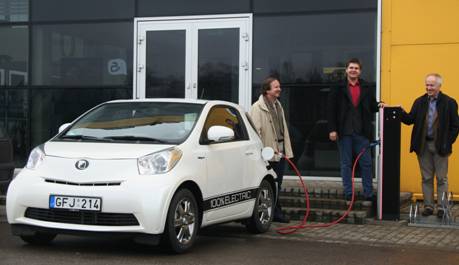
Kaunas electronics manufacturer ELINTA has come a long way in developing a new electric car here in Kaunas. These three gentlemen
are behind the success: Dr. Vytautas Jokužis, Laurynas Jokužis
and Dr. Vladas Lašas.
Elinta is a company that combines electronic with intellect. The company was established in 1991, as a research and production firm. From the start the company’s main hall mark was A highly skilled team, high quality goods and services. The business strategy, based on designing high-tech and consumer-friendly automated control systems, allowed the company to develop fast and surpass its competitors.
- Bookmark :
- Digg
- del.icio.us
- Stumbleupon
- Redit it
- Posted by - (3) Comment
Electric cars made in Lithuania!
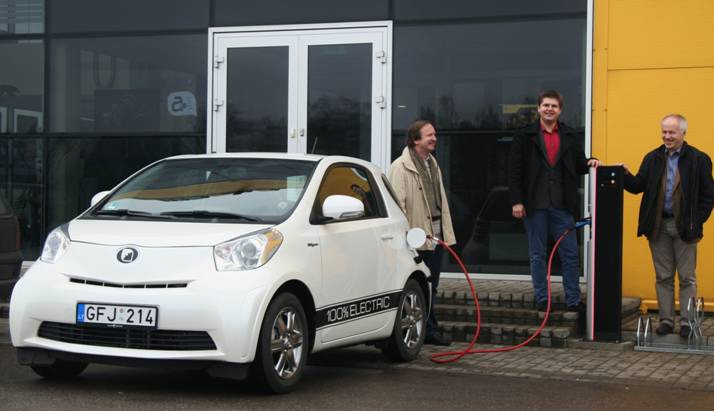
Kaunas electronics manufacturer ELINTA has come a long way in developing a new electric car here in Kaunas. These three gentlemen are behind the success: Dr. Vytautas Jokužis, Laurynas Jokužis and Dr. Vladas Lašas.
Since 1994 Elinta has also been selling products from some of the most advanced European companies. They were the first to bring the products of SIEMENS, PHOENIX CONTACT, and RITTAL to Lithuania.
With time Elinta gained significance in the field of Lithuanian industry automation. With the aim to optimise its performance ELINTA modernised its organisation by relocating different types of activities to secondary companies: UAB Elinvision, UAB Elintos matavimo sistemos, UAB Elinta VS.
As a mother company, UAB Elinta coordinates the activities of its subsidiaries. It is involved in scientific-research work, employee training and other fields, necessary for the activities of the Company Group. Currently Elinta has Sales Department which sells automation elements, and an Assembly Department which assembles automation and electricity cabinets.
UAB Elinta VS is a manufacturing company, involved in technological process automation. The main areas for automation activities include heat and electricity production, water supply and cleaning, waste disposal, production of sugar, artificial fertilizers, bio fuel, and etc. The company performs designing, programming, management systems implementation and maintenance work. One of the projects was Kaunas wastewater treatment plant.
UAB Elinvision designs and produces computer vision systems, signal measurement and processing systems. These systems can be successfully applied in automation of production quality inspection in a number of industries. The company produces three-dimensional scanners (3D) for production of orthopaedic and regular shoes and granule size monitoring systems for fertiliser industry. 3 D scanners are knownmore than in 30 countries around the world.
UAB Elintos MS supplies measurement and calibration equipment, process calibrators, testing and adjustment systems, data collection instruments and feeding sources for industrial enterprises.
Elinta has always been an inovative company, suggesting new ideas, solutions for interprises and society. Latest idea that has grown from a project to real creation is Elinta Electric vehicle. Elinta was the company that established the first electric vehicle charging point in Lithuania
Company CEO dr. Vytautas Jokužis and his colleague Vladas Lašas pays a lot of attention to ideas of young scientists, implementation and promotion of entrepreneurship. They inspire young people to create new technologies, innovative ideas.
Now Elinta has grown to company that has about 80 employees, always active in taking part in different innovative projects, collaborates with universities, always open to the society.
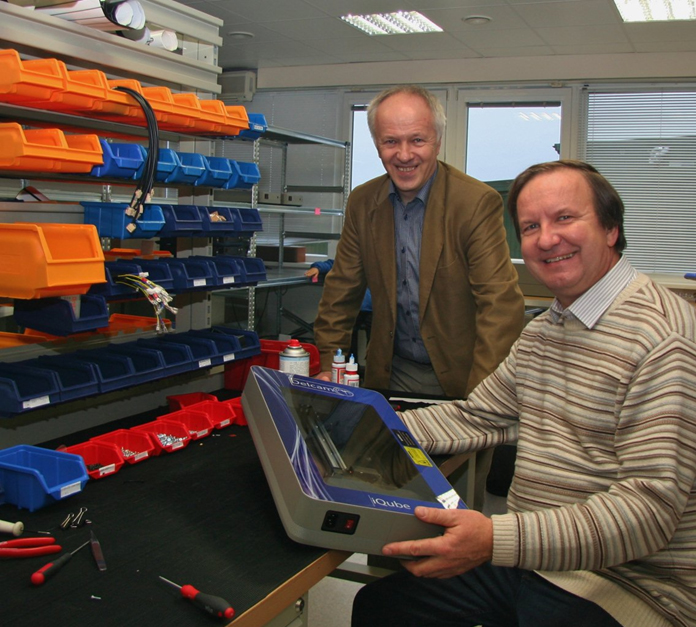
Dr. Vytatuas Jokužis and Dr. Vladas Lašas with one of the company’s new intelligent products, a three-dimensional scanner (3D) for production of orthopaedic and regular shoes
- Bookmark :
- Digg
- del.icio.us
- Stumbleupon
- Redit it
- Posted by - (0) Comment
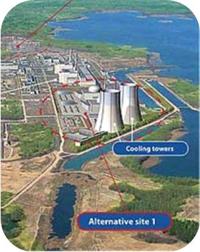
The Visaginas power station must be built!
By Mindaugas Gedgaudas
Newhall, California
Read this article from the recent issue of World Nuclear News.
The campaign to thwart the construction of a nuclear power plant in Lithuania was and continues to be orchestrated by Russia; Russia is, and has been throughout history, determined to absorb the Baltic Nations, particularly Lithuania into their imperium.
Today, Lithuania is nearly 100% dependent on Russia for sources of fuels to generate electricity; if a new nuclear power station is not built in Lithuania, all electricity will soon be coming from Russian plants, and then we will not only be totally dependent on Russia's whims, but will also be paying them - as we already do - to continue lulling us to eventually accept the imposition of their imperial dominance. What wars, terrorism, subjugation, murder, brainwashing, denial of human rights failed at, the simple matter of control of electric power just may lead to success. It is not for nothing that Russia demanded to remain as occupants of the Kaliningrad region and eventually annexed it; it is not goodwill towards the Baltic States that caused them to build a large power station next door to Lithuania; that was done with the clear intent of drawing Lithuania into their hegemony and so obliterating it as a sovereign people.
Nuclear power is the only method available to Lithuania to have a non-polluting, nearly inexhaustible and cheap source of electricity without dependence on the governments of the surrounding states. The Visaginas power station must be built and interference with its progress must be countered.
Mindaugas Gedgaudas
Newhall, California
- Bookmark :
- Digg
- del.icio.us
- Stumbleupon
- Redit it
- Posted by - (0) Comment
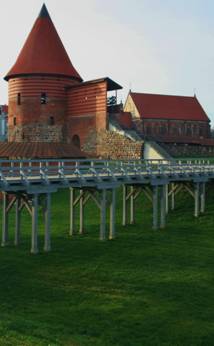
Kaunas may become European Green Capital of 2015
The competition for the prestigious award in 2015 will involve two cities of the United Kingdom – Bristol and Glasgow, also Brussels (Belgium), Bydgoszcz (Poland), Dublin (Ireland), Kutahya (Turkey) and Ljubljana (Slovenia), writes LETA/ELTA.
"The idea was initiated several years ago by Tallinn and it soon gained momentum. Every year the European Capital of Culture is announced, and now in addition to that we have a different European Green Capital elected every year. Several representatives of different European cities in a meeting in Brussels urged Kaunas to seek the award of the greenest capital in Europe. What is more, foreign guests often note that Kaunas is a very green city," said Kaunas Mayor Andrius Kupcinskas.
The title of the European Green Capital is given to a city leading environment-wise. An international commission of experts technically evaluates the candidates according to 12 criteria: climate change and energy efficiency, sustainable local transport, air quality and noise-pollution, green urban areas and sustainable use of land, nature and biodiversity conservation, waste management, water consumption and sewerage, eco-innovations and sustainable employment, as well as environmental management practice of the local government.
- Bookmark :
- Digg
- del.icio.us
- Stumbleupon
- Redit it
- Posted by - (0) Comment
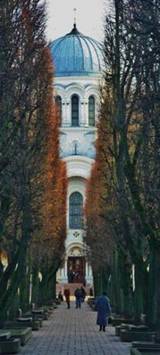 |
KAUNAS IN FOCUS Kaunas, Lithuania's second largest city and former capital, is receiving much attention in VilNews now as 2012 is coming to an end. We focus on history, business, culture, innovation, tourism and more. We would also like to hear from you who have you personal Kaunas... Send us your Kaunas story! |
Kaunas – the feel of
traditional Lithuania
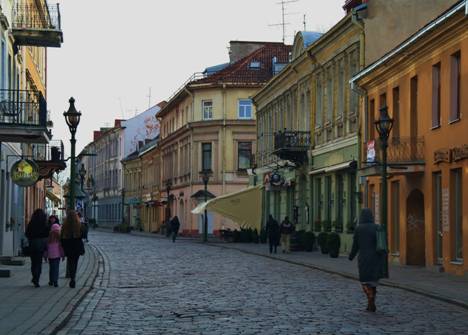
Vilniaus gatve (above), the Kaunas Old Town’s main street, was back in the 13th century a highway linking the city with Vilnius.
Read more at http://en.wikipedia.org/wiki/Centras_(Kaunas)
Text and photos: Aage Myhre
It was in 1408 that Lithuania’s Grand Duke Vytautas the Great granted Magdeburg rights to Kaunas, and after that point in time this settlement at the confluence of the Neris and Nemunas rivers began to grow as an important centre and main port for Lithuanian trade with Western Europe.
The original settlement, where today’s Kaunas old town is located, was first mentioned by the chroniclers in 1361, and it was here in the old town the first brick castle was built by the end of the 14th century, to defend Kaunas from the Crusaders’ attacks.
- Bookmark :
- Digg
- del.icio.us
- Stumbleupon
- Redit it
- Posted by - (0) Comment
|
KAUNAS IN FOCUS 24 NOV – 26 DEC 2012 Kaunas, Lithuania's second largest city and former capital, is receiving much attention in VilNews now as 2012 is coming to an end. We focus on history, business, culture, innovation, tourism and more. We would also like to hear from you who have a personal Kaunas story. Send us your Kaunas story!
|
Kaunas – the feel of
traditional Lithuania

Vilniaus gatve (above), the Kaunas Old Town’s main street, was back in the
13th century a highway linking the city with Vilnius.
|
KAUNAS OLD TOWN has a lot of surviving Gothic, Renaissance and Baroque buildings. Many notable buildings and facilities are located here, such as the Kaunas Town Hall, the Kaunas Castle and the Historical Presidential Palace, House of Perkūnas, also the Kaunas Cathedral, the Church of St. Gertrude, Vytautas' church and many other churches. Great variety of museums, such as Museum of the History of Lithuanian Medicine and Pharmacy, Povilas Stulga Museum of Lithuanian Folk Instruments, Maironis Lithuanian Literature Museum, Communication History Museum, Museum of Gemology and Kaunas City Museum. The largest seminary in Lithuania - Kaunas Priest Seminary is located at the westernmost part of the Old Town. Read more at http://en.wikipedia.org/wiki/Centras_(Kaunas) |
Text and photos: Aage Myhre
It was in 1408 that Lithuania’s Grand Duke Vytautas the Great granted Magdeburg rights to Kaunas, and after that point in time this settlement at the confluence of the Neris and Nemunas rivers began to grow as an important centre and main port for Lithuanian trade with Western Europe.
The original settlement, where today’s Kaunas old town is located, was first mentioned by the chroniclers in 1361, and it was here in the old town the first brick castle was built by the end of the 14th century, to defend Kaunas from the Crusaders’ attacks.

Kaunas castle is the oldest masonry castle in Lithuania. It was first mentioned in documents in year 1361 http://en.wikipedia.org/wiki/Kaunas_Castle
In 1441, Hansa merchants opened an office in Kaunas, and this marked the beginning of a very dynamic growth for the town. By the end of the 16th century, Kaunas had its first school, public hospital and chemist shop, and was fast becoming one of the most developed towns in all the huge Grand Duchy of Lithuania.
However, during the 17th and 18th centuries, Kaunas was to travel through a long period of hardship and hostility, not least because of attacks by the Russian army in 1655, the Swedish march to Russia in 1701, plagues in 1657 and 1708, as well as devastating fires in 1731 and 1732.
At the end of the 18th century, the fortunes of Kaunas revived a little but only until 1812, the year that saw Napoleon's army cross the Nemunas River in Kaunas on their path to Vilnius and later Russia. Heading towards the end of the 19th century, Kaunas experienced several major developments that helped it back onto a path of prosperity and growth; developments such as the opening of the Oginsky canal connecting the Nemunas and Dnieper rivers; the railway connecting the Russian Empire and Germany that was built in 1862, and the opening of the first power plant in 1898.

Napoleon's Army Crossing the Nemunas at Kaunas 24 June 1812
Wood carving. Artist: Dž. Bagetti. Carver: I. Klauberis
The First World War stemmed the further development of Kaunas mainly because of the Tsar occupation, which meant Kaunas lost its independence until 1919. With Vilnius occupied by Russia in the same year, the State Council and Cabinet of Ministers moved and established themselves in Kaunas. The following years, with Poland occupying Vilnius, Kaunas became the capital and the most important city of Lithuania governed by its first Burgomaster, Jonas Vileisis; a period considered by many as the golden age of the city. In 1920, the national parliament (Seimas) gathered in Kaunas and laid the basis for the country's legal and parliamentarian system. Over the next few years Kaunas once again experienced rapid economic and industrial growth and a significant increase in population. In 1924 the first buses appeared in Kaunas, and in 1928 plumbing was installed in most of the city's buildings.
After the Second World War, Kaunas suffered further during the forty years of Soviet occupation, as many buildings and signs of Lithuanian independence were demolished or removed. One of the world’s first public protests against the Soviet rule was in 1972, when a young man, Romas Kalanta, set himself on fire in the square in front of the Musical Theatre of Kaunas. In 1988, upon the rising of the liberation movement, many city sights were revived: streets and museum names were returned, and many monuments of independence times were restored.


One of the world’s first public protests against the Soviet rule was in 1972, when a young man, Romas Kalanta, set himself on fire in the square in front of the Musical Theatre of Kaunas. http://en.wikipedia.org/wiki/Romas_Kalanta
Since independence, Kaunas has established close links to western countries and companies, and with Lithuania having one of the fastest economic growth rates of the new EU member states, Kaunas has most certainly been one of the powerhouses of industry that has helped produce such an impressive economic climate in the country today. Kaunas has come a long way and it shows no signs of slowing down!
The excellent location of Kaunas in the very centre of Lithuania is certainly one of its main advantages, situated as it is on the crossroad of the main Lithuanian transport flows. Two main highways cross the city - Via Baltica, which connects Helsinki and Warsaw, and the highway that connects Vilnius and the port city of Klaipeda. A more an more important international airport is contributing to Kaunas’ attractiveness as the point that connects Lithuania to the world.
The long traditions of higher education is today being actively utilised as a base for Kaunas new profile as “the intelligent city” with special focus on areas like IT and development of companies, research institutions and programmes that support a dynamic and innovative economy.
The basketball team Žalgiris with its famous player Arvydas Sabonis, as well as other baskeball and other sports have put Kaunas on the world map
Kaunas is the second biggest city in Lithuania with the total area of 155.5 sq. km. and a population of approximately four hundred thousand.
The today’s Kaunas old town is a fascinating combination of archaeology, architecture and history. Here one finds the remains of a castle dating back to the 13th to 16th centuries standing as evidence of the ancient battles between Lithuania and the knights of the Teutonic Order. Numerous other buildings crowd together in a stimulating mixture of the arts and architecture of different eras. The 15th century produced the church of Vytautas, Saint George's church and the reconstructed Cathedral. City Hall, dating from the 16th to 18th centuries, is surrounded by charming old houses; the Perkūnas (Thunder) House dates back to the 15th century. Some of the city's structures are recognized as representing a distinct variation of the Northern European Renaissance style, notably the Church of the Holy Trinity and the Masalskis Manor complex (16th to 18th century).
The most outstanding baroque monument is the Paxaislis monastery, a collection of buildings dating from the 17th and 18th centuries. This is among the most lovely examples of ecclesiastical architecture in Northern Europe, unified architecturally by its hexagonal design and a majestic cupola, with its façade proportioned according to the principles of Italian baroque, and its interior decorated with subtly coloured frescoes and statues.
Kaunas is a city of very old and established cultural traditions and a place where generations of Lithuanian artists, composers and writers lived and have left their imprint. Their works are on display in various museums and galleries, of which two are especially notable. The Art Gallery of M. K. Čiurlionis displays the work of this great painter and composer, who earned his place in the history of art.
It is possible to review Lithuania's history from its prehistory to the present day, at the Military Museum of Vytautas the Great. Among the most interesting exhibits is a memento of an early transatlantic flight - a wreck of the "Lituanica." In this plane, two pioneering Lithuanian aviators, Steponas Darius and Stasys Girėnas, flew non-stop from New York in 1933, sadly crashing in German territory, not far from their final destination in Lithuania.
Kaunas is Kaunas!
Some Kaunas images
Photos: Aage Myhre

The Town Hall of Kaunas (Lithuanian: Kauno rotušė) in the Town Hall Square, also called "The white swan". The structure dates from the 16th century. Today used for wedding ceremonies and official events.
Read more at http://en.wikipedia.org/wiki/Town_Hall,_Kaunas























- Bookmark :
- Digg
- del.icio.us
- Stumbleupon
- Redit it
VilNews e-magazine is published in Vilnius, Lithuania. Editor-in-Chief: Mr. Aage Myhre. Inquires to the editors: editor@VilNews.com.
Code of Ethics: See Section 2 – about VilNews. VilNews is not responsible for content on external links/web pages.
HOW TO ADVERTISE IN VILNEWS.
All content is copyrighted © 2011. UAB ‘VilNews’.
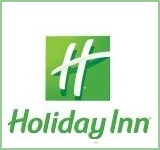
 Click on the buttons to open and read each of VilNews' 18 sub-sections
Click on the buttons to open and read each of VilNews' 18 sub-sections 






















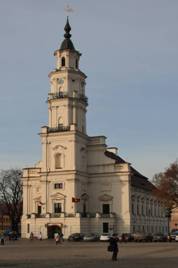
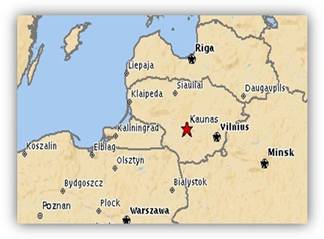
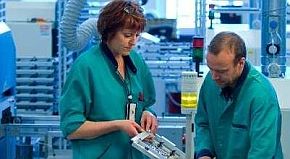



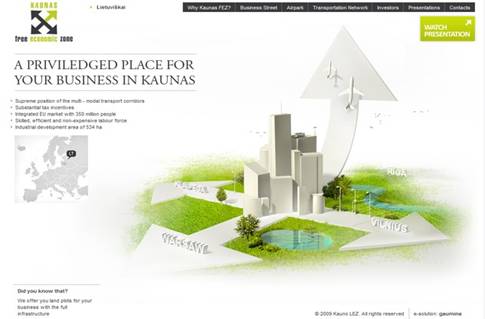


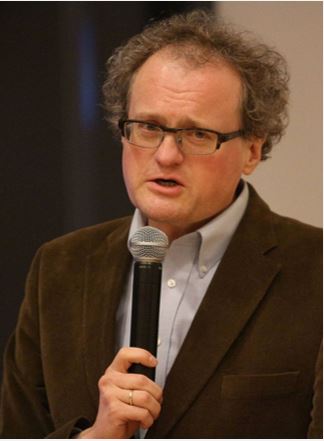
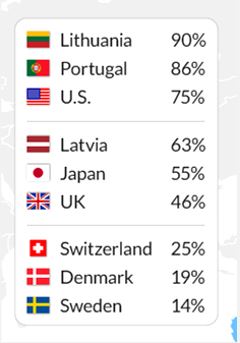
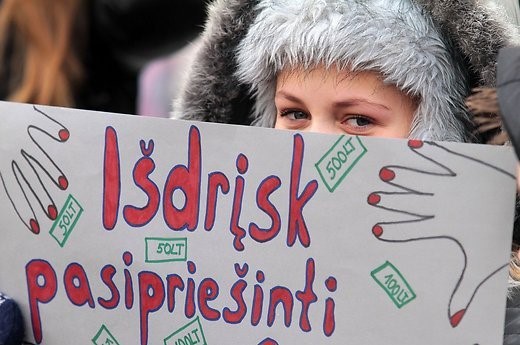


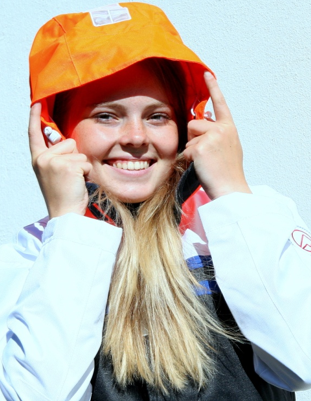
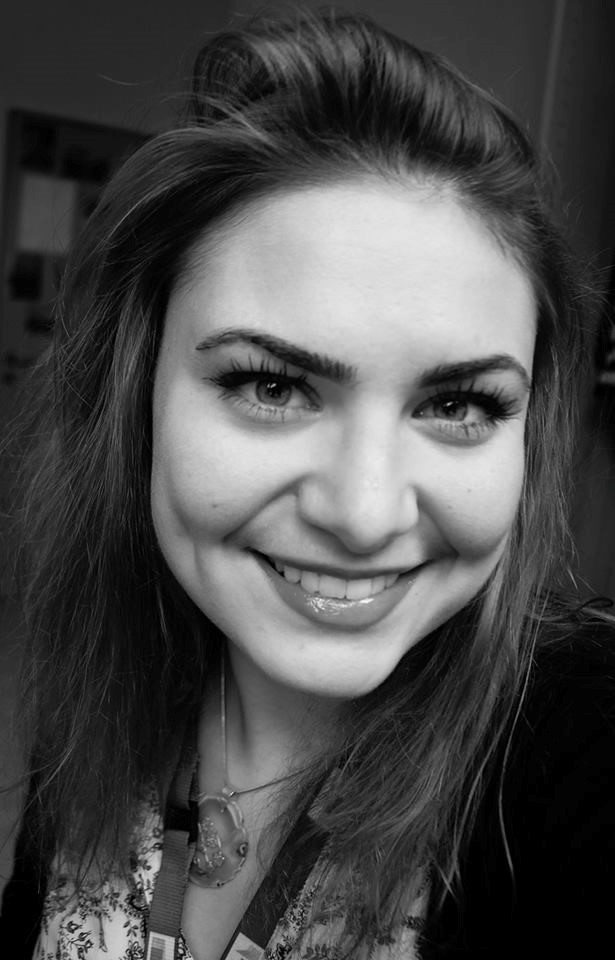
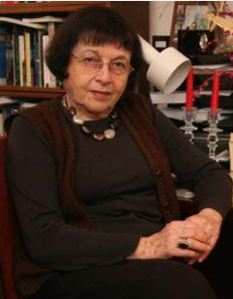
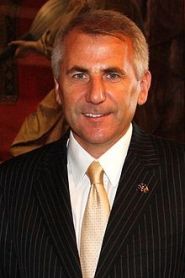
.jpg)
